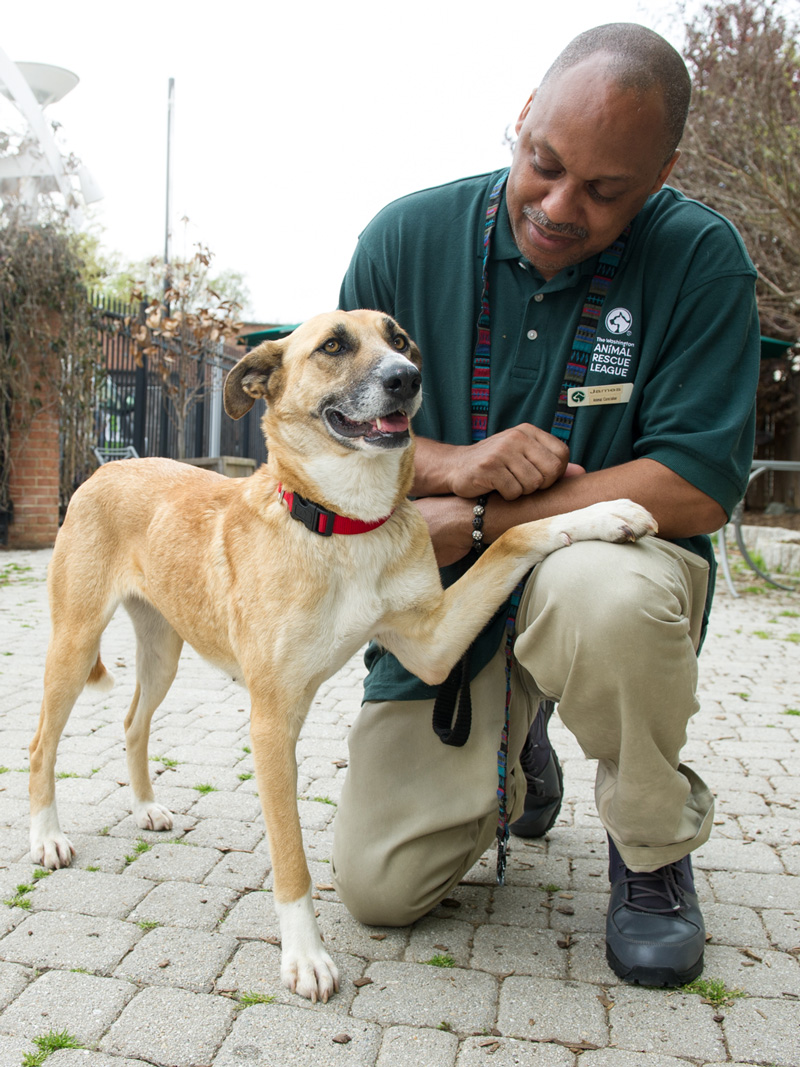All in good time
Trial adoptions can pave the way to more and better matches

During the COVID-19 crisis, we in the animal welfare field have watched tens of thousands of people step up to foster and adopt pets, allowing organizations to experiment with new protocols and reallocate staff to support new adopters and foster caregivers. For many of us, the success of these efforts has renewed our faith in our communities and made us reexamine our foster care and adoption policies.
But there’s one area where we can welcome even more people into the mission of helping pets—by allowing adopters plenty of time to make a commitment.
Historically, we’ve asked people to fill out adoption paperwork only a few hours after meeting a pet at the shelter, hoping they absorb the massive amount of information we’ve relayed to them. Occasionally, when an animal has additional medical or behavioral needs, we may allow the adopters to visit repeatedly or keep the animal as a foster pet until their medical procedures are completed, but it’s not yet a policy applied to all pets or to all adopters.
As someone with an “in” with shelter staffers, I’ve requested and been allowed to spend six weeks or even three months making a final decision to adopt a pet. Unfortunately, that leeway isn’t always afforded to the general public. Friends of mine have reported feeling rushed through the process, then guilty when things don’t work out.
There’s one area where we can welcome even more people into the mission of helping pets—by allowing adopters plenty of time to make a commitment.
When organizations examine their direct or indirect barriers to increasing adoptions, they often realize that certain perks extended to rescue and shelter staff and volunteers aren’t available to all interested adopters. A staff member might be allowed to try a new dog at home with her other pets, for example, while the shelter wouldn’t let that same pet go to a new home with other dogs or cats, citing the dog’s behavior toward other animals in the shelter. Similarly, if they weren’t employees, many staff might not have been approved for adoption at their own shelters, due to their organizations’ lengthy and cumbersome requirements, including landlord checks, fence mandates and assurances that someone will be home most of the day.

Whether they’re called “trial adoptions” or “foster-to-adopt” agreements, allowing people time to make a commitment can help determine if the new pet is a great match for the family. It can also give people the confidence to try incorporating a new pet into their households without the fear that they will be judged harshly if the match doesn’t work out. As a certified professional dog trainer, I know that animals can experience a honeymoon period for the first six weeks in a new home. Dogs and cats with a range of behavioral challenges in the shelter begin to shed their baseline stress and blossom with a new routine.
But just like with people, the honeymoon doesn’t always last. As some pets become more comfortable and confident, they may also begin to show behaviors we haven’t yet seen in the shelter environment or even in a previous home, such as resource guarding, reactivity, hyper-arousal, overstimulation and prey drive. With a relatively well-adjusted pet, I feel reasonably comfortable that I truly know who he or she is after six weeks. But if you’re trying to place an animal who may exhibit even minor behavioral challenges, adopters need the time to determine if their lifestyle matches the needs of the pet. Sometimes it won’t, and that’s OK.
Shelters that explicitly allow and even encourage potential adopters to spend weeks or months getting to know their new pet will see an increase in adoptions.

Three years ago, I was searching for a second dog. My lifestyle requires a dog who gets along with other dogs (small and large), cats and children; can travel well in a car; and can be off-leash on daily hikes in the woods. Not a small ask of a pet! I returned two incredible dogs before I found Nova, and I didn’t finalize her adoption paperwork for three months. The other two dogs went on to find amazing homes that could better meet their needs.
Shelters that explicitly allow and even encourage potential adopters to spend weeks or months getting to know their new pet will see an increase in adoptions. While organizations have worked to dispel the myth that returning a shelter pet is bad, most people don’t want to go through that potentially heartbreaking process. Adopters want to allow other family members and resident pets to make the decision with them—something that can’t be determined in a weekend. (Just ask any resident adult cat who is used to being the sole proprietor of attention.)
Encouraging trial phases for adopters won’t create a “throwaway society.” On the contrary, it will enhance long-lasting bonds.

The pandemic has given us an opportunity to shift our resources from within our buildings to outside the shelter walls. Shelters have built an extensive network of foster parents and reworked staffing models to support those animals in the home. The crisis delayed some adoptions from being finalized while animals waited for spay/neuter surgeries in loving homes. Let’s build on this. Encouraging trial phases for adopters won’t create a “throwaway society.” On the contrary, it will enhance long-lasting bonds.







